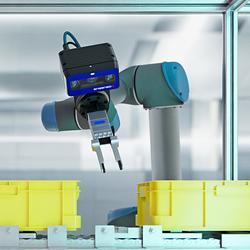Mobile Robots Set to Reach 2.8 Million Shipments by 2030 as Applications Expand Across Industries
As supporting technologies evolve, mobile robots are primed to break into new markets, transforming manufacturing, last-mile delivery, agriculture, and healthcare
Mobile robot shipments will remain the highest across all robot form factors. ABI Research, a global technology intelligence firm, forecasts shipments to grow from 547,000 units in 2023 to 2.79 million by 2030, a CAGR of 24.1%. Mobile robots are most used within warehousing and logistics, but the form factor is increasingly essential in manufacturing, last-mile delivery, agriculture, and healthcare. Mobile robots demonstrate efficiency improvements for diverse applications varying from cleaning to security. Accordingly, revenue generated from mobile robots will rise from US$18 billion to US$124 billion by 2030, a CAGR of 23.6%.
"Mobile robots are a very valuable category of robot which have completely transformed warehousing and logistics in recent years," says George Chowdhury, Robotics Industry Analyst at ABI Research. "For material handling alone, mobile robots offer enterprises transformative efficiency improvements. Driven by the evolution of supporting technologies such as Simultaneous Localization and Mapping (SLAM), mobile robots can be deployed in diverse and dynamic environments, presenting new horizons to stakeholders and bringing efficiency improvements to under-automated economic sectors such as agriculture and healthcare."
While warehousing and logistics will remain the primary adopters, other market verticals will enjoy accelerated uptake by the decade's end. Shipments catering for agriculture deployments will rise from 7,000 to 129,000 per year by 2030, a CAGR of 45%; shipments for delivery will grow from 14,000 to 147,000, a 37% CAGR; public-facing applications will also increase as the use of mobile robots within restaurants progress from 6,000 in 2023 to 78,000 shipments in 2030, a 43% CAGR. Many other industries will benefit from the decreasing costs, greater versatility, and simplified programmability that vendors are bringing to the mobile robot market. There are many vendors specializing in each market vertical. Companies such as MiR, Omron, Otto Motors, and ABB tackle intralogistics within manufacturing; companies such as Zebra, Locus, and Safelog target marketing; Simbe and Brain Corp address retail; and Starship aims to tackle the last-mile delivery market.
"Mobile robots will remain the most popular form of robot, and shipments will continue to increase across economies as the benefits of augmenting existing business practices with automation become clear to decision-makers. As trust in Autonomous Mobile Robot (AMR) technologies grows, we will increasingly see mobile robots in public spaces. Hospitals, agriculture, retail stores, and last-mile delivery are all nearing readiness for the mass adoption of mobile robots," concludes Chowdhury.
These findings are from ABI Research's Mobile Robotics market data report. This report is part of the company's Industrial, Collaborative & Commercial Robotics research service, which includes research, data, and ABI Insights. Market Data reports spreadsheets comprise deep data, market share analysis, and highly segmented, service-specific forecasts to provide detailed insight into where opportunities lie.
Featured Product

